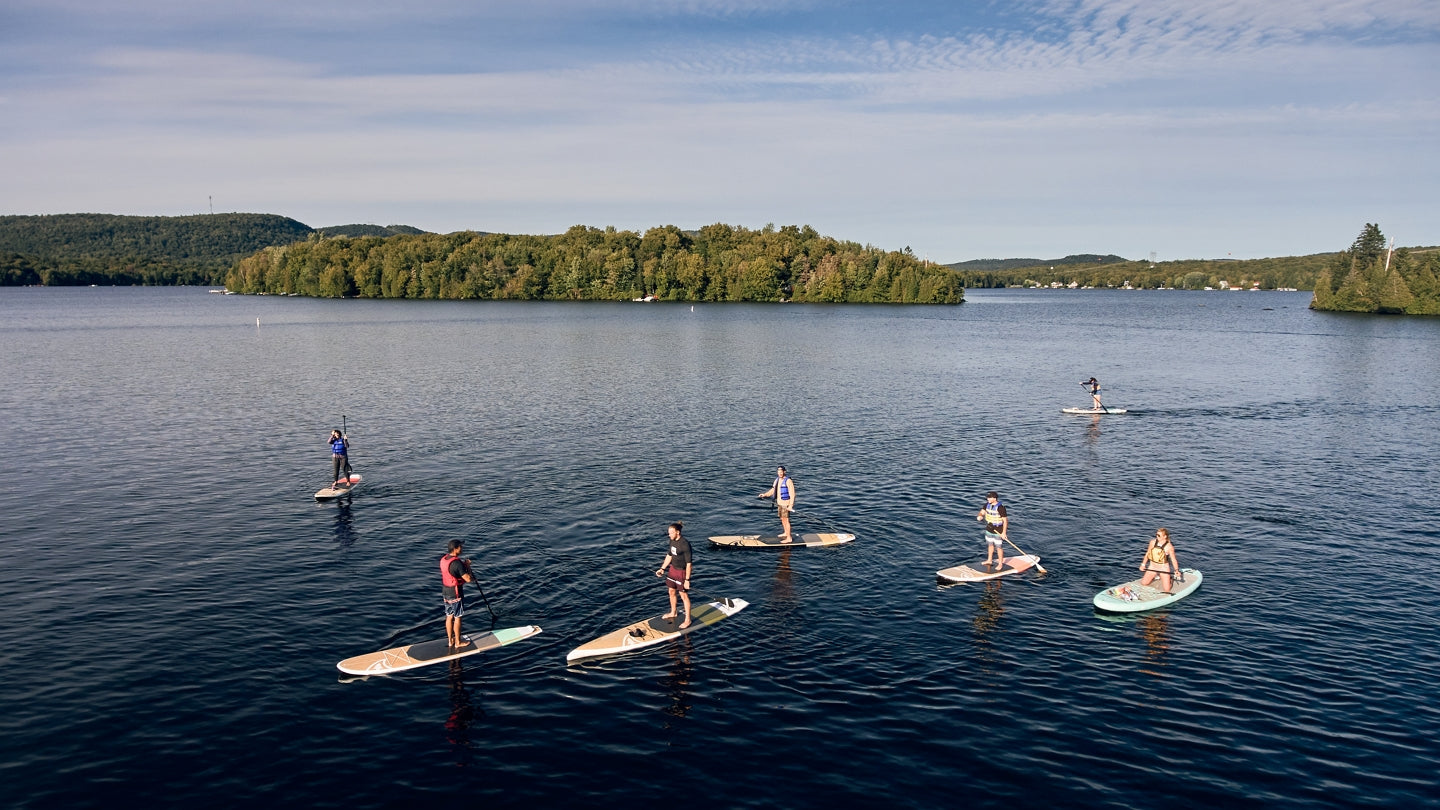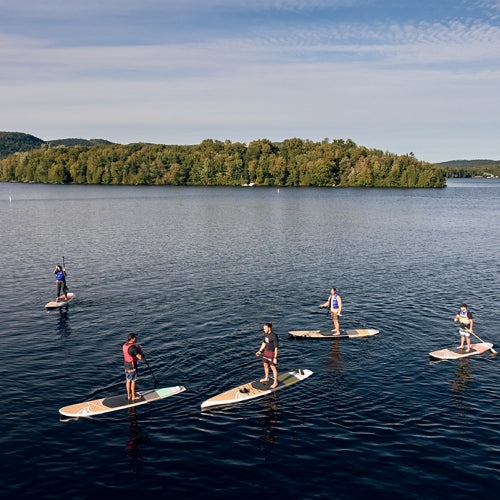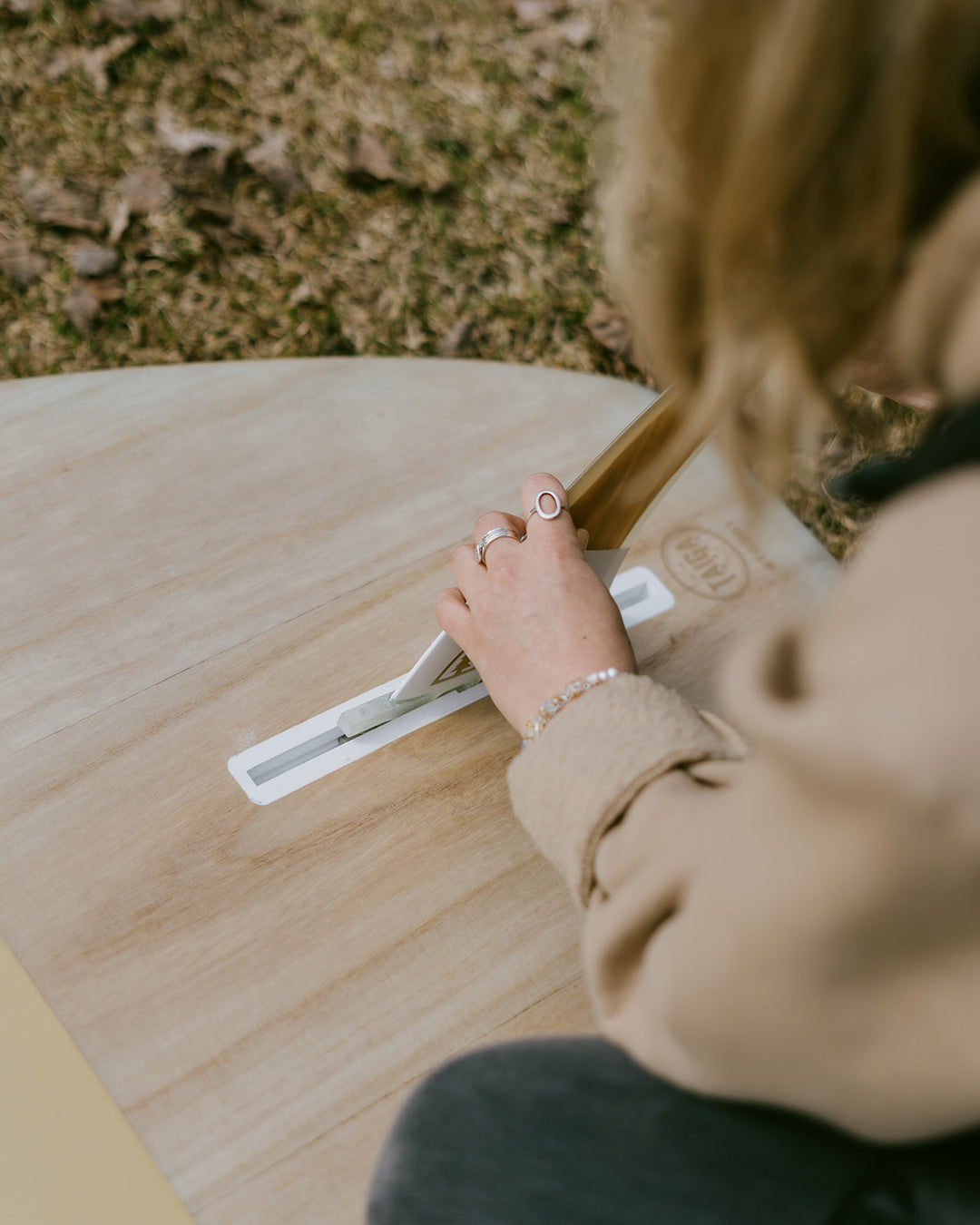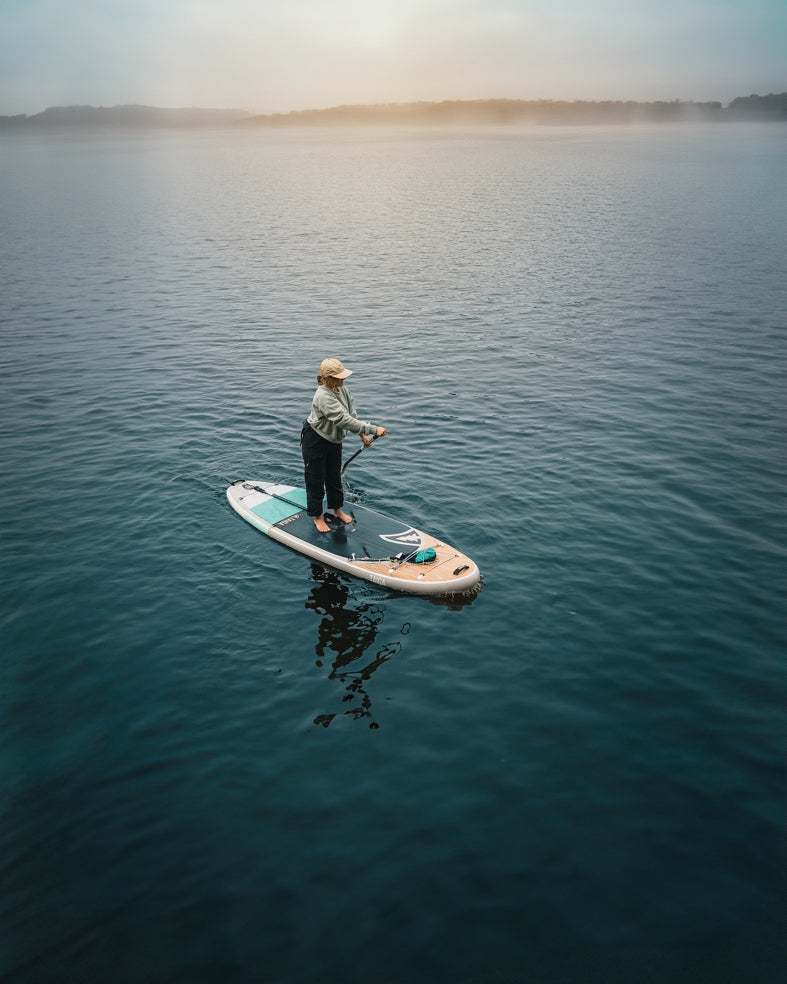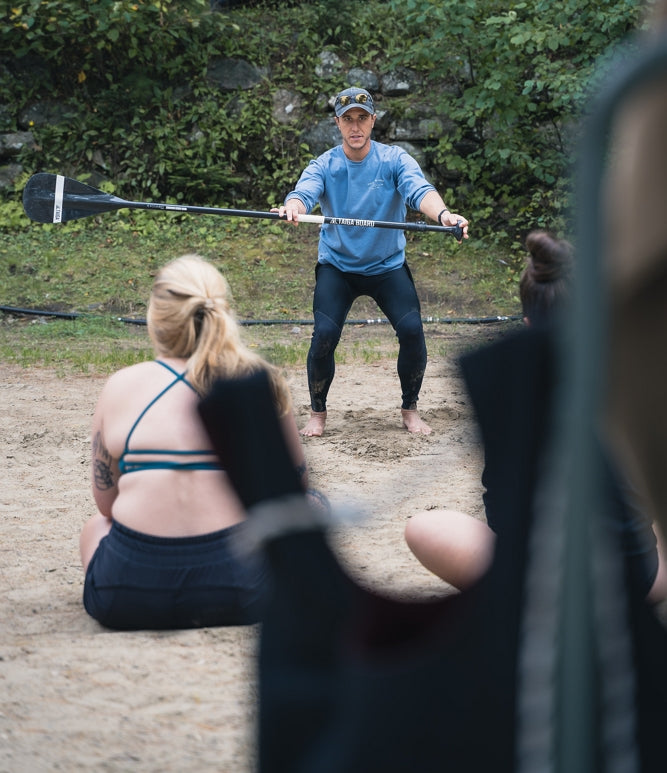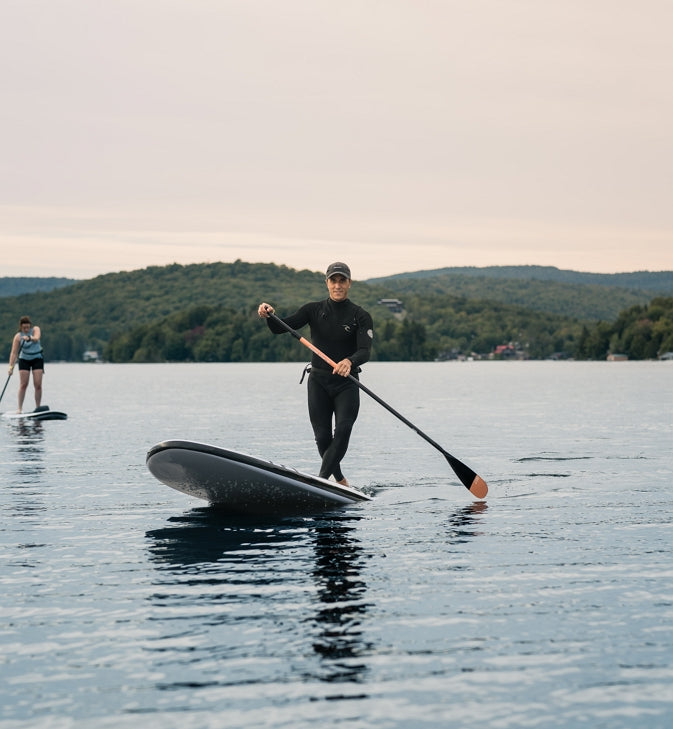Paddleboarding has witnessed a significant surge in popularity over the years, enticing many to acquire an entry-level board. However, as enthusiasm for this emerging sport grows, so do the myths and misconceptions. This article explores the challenges associated with its adoption, dispels common misconceptions, and provides tips for informed purchases.
3 Fins = Stability
FALSE.
A common myth suggests that the more fins on a SUP board, the more stable it is. In reality, stability depends more on the board's width, thickness and shape.
Fins are designed to maintain direction and improve maneuverability, but they are not the determining factor for stability. That's why some models have only a central fin. Just think of the Awen 10’0’’, the Thuya 11’0’’ and the Hooké 11’6’’, which together make up our top 3 most stable boards!
They're also lighter, easier to fold and keep you on course. On a lake, it's always better to have just 1 fin (even if you have the option of adding more!).
You know when we say there are too many popular beliefs to debunk... here's a good one!
''The Hook Will Pierce the Board''
FALSE.
Thanks to our technological advancements, such as Fusion Skin (two layers of fused membrane), our inflatable SUPs offer exceptional strength, resisting impacts even in demanding conditions.
Our commitment to quality is evident in the multi-layer construction, intelligently combining fiberglass and ultra-durable military-grade PVC on the rail band, ensuring unparalleled robustness. Rest assured, you can fish confidently with TAIGA.
P.S. We're not just saying this – a car actually ran over this board (inflated!!). Take a look for yourself and see how it stayed completely intact. Fish hooks don't scare our boards; they've already survived worse!
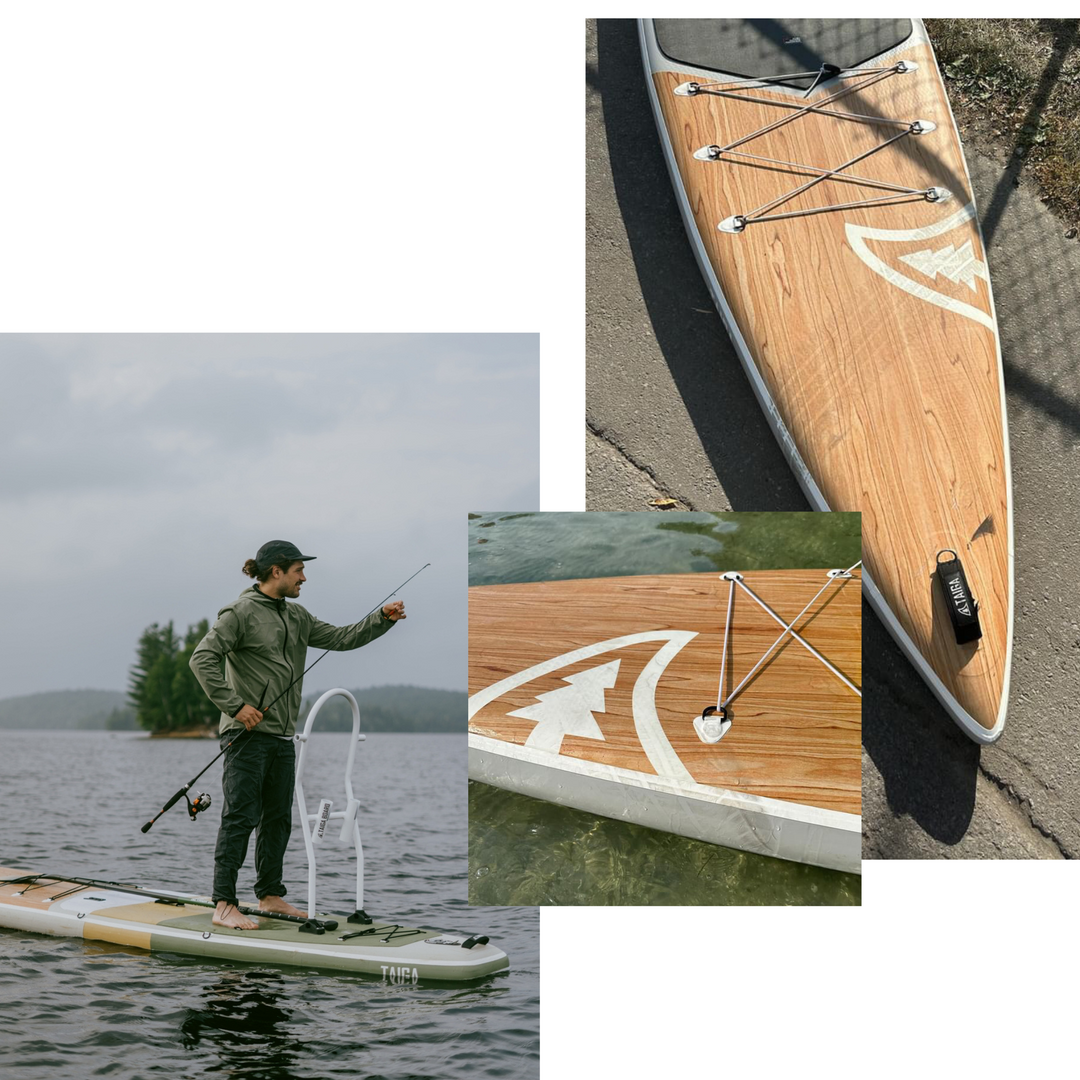
Entry-Level Boards Are a Good Buy
FALSE.
Acquiring a low-cost paddle board may seem appealing, but it's not always a wise choice. When choosing an inflatable board, prioritizing resistance and durability is crucial. The true value lies in construction and material selection.
Trust in your board is essential, especially for water safety. Picture yourself in the middle of the ocean or a lake with a deflating board. You don't want that.
Cheap boards may compromise durability, stability, and overall performance. Investing in a higher-quality board, despite a higher initial cost, ensures a safer, more reliable, and durable paddleboarding experience.
Paddleboarding is Easy
FALSE.
Okay, yes, it's easy in the sense that it's a sport accessible to everyone. But no, it's not easy in the sense that it's boring and doesn't require introductory lessons.
Paddleboarding offers universal accessibility, but to fully enjoy it, a bit of training and exploration can turn an ordinary experience into something extraordinary. It's a fact: just because you've canoed or kayaked before doesn't mean you know how to paddle board. Paddle strokes are different, you're standing instead of sitting, turns are different, etc.
It's a whole different world to explore; it's much more technical than one might think, and the difficulty of maneuvers can increase quite rapidly.
